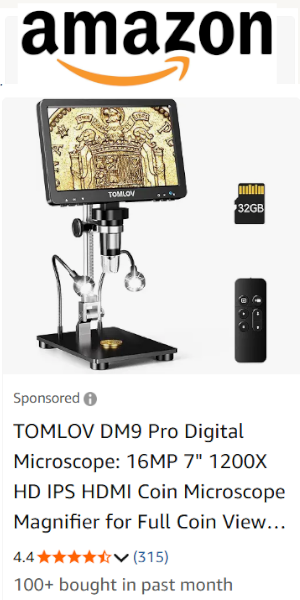Introducing a child to coin collecting is a gift that goes beyond the ordinary. It's an invitation to an exploratory journey through culture, history, and economics. With a coin collection, a child doesn't just amass an assortment of metal pieces; they curate a treasury of stories and lessons that can inspire a lifetime of learning and passion.
Introducing a child to coin collecting is a gift that goes beyond the ordinary. It's an invitation to an exploratory journey through culture, history, and economics. With a coin collection, a child doesn't just amass an assortment of metal pieces; they curate a treasury of stories and lessons that can inspire a lifetime of learning and passion.
The Ideal Age to Begin Collecting
Starting coin collecting at an early age has significant advantages. Children around six are typically mature enough to appreciate and handle coins with care, but still possess a natural curiosity that makes learning about them exciting. By entering the world of coin collecting, they embark on an enriching educational pathway that continues right through to adulthood.
Learning Through Local Coins
The beauty of coin collecting is that it doesn't require a fortune to begin. Commence their collection with familiar, circulating coins. Take a journey through history and culture with each coin. Conversations that start with "Did you know...?" can lead to discussions about historical events, introducing them to different periods in history.
Bonding Over Bags of Coins
Should your child receive a bag of coins as a gift, that's a perfect opportunity to bond. Take the time to sort through them together. Each coin has its tale - its own little piece of history. Explain the significance of each coin, even the more common or recent issues. These hands-on sessions can form the baseline for a lifelong love of numismatics.
Equipping Your Young Collector
Begin your child's numismatic journey with the right tools: coin collecting magazines, white gloves for safe handling, magnifying glasses to examine details, and albums to store their collection. Teach them about the coins that are no longer in circulation and explain why some coins are more valuable than others. Knowledge will enhance their appreciation for their growing collection.
Starting with the Basics
Young collectors should start by getting to know the basics of modern coinage before diving into more expensive realms. Growing an appreciation for coin collecting doesn't require pricey acquisitions; it's about understanding and passion. A magnifying glass becomes a window to microscopic worlds etched onto the surfaces of coins, igniting wonder and questions that you can explore together.
From Hobby to Family Tradition
Coin collecting can often grow from a simple hobby into a full-fledged family tradition. Encourage other family members to get involved. Soon, your child's enthusiasm may lead to your whole family rummaging through old piggy banks or even sweeping a metal detector over the soil in hopes of unearthing forgotten treasures.
The Broader Benefits of a Numismatic Hobby
A numismatic hobby offers more than mere fun; it’s a foundation for developing patience, perseverance, and a deeper understanding of financial principles. These are critical life skills that can benefit your child immensely. As your child grows, so too may their collection and expertise, potentially leading them to become esteemed numismatists.
By introducing your child to coin collecting, you're offering more than a pastime; you're giving them a key to unlock myriad worlds of knowledge. As they delve deeper into the hobby, their collection will expand, and so will their understanding of finance and history. Local coins can serve as gateways to captivating historical narratives that can engage a child's imagination and desire to learn. Together, you can discover coins' stories, sparking a potential career in numismatics or merely a fulfilling lifelong interest. So begin this exciting journey with your child today, and watch as an incredible world unfolds before their eyes — all within the palm of their hand.
Information for this article was gathered from the following source.


